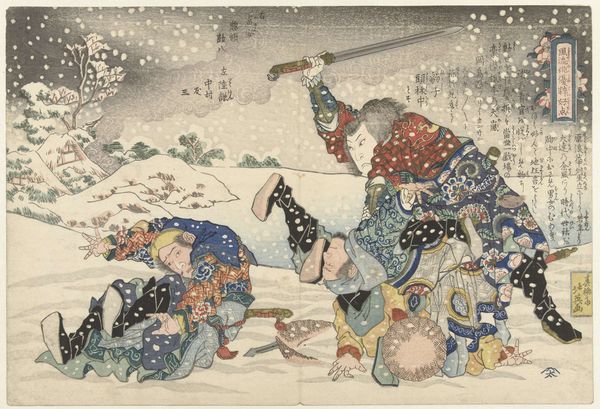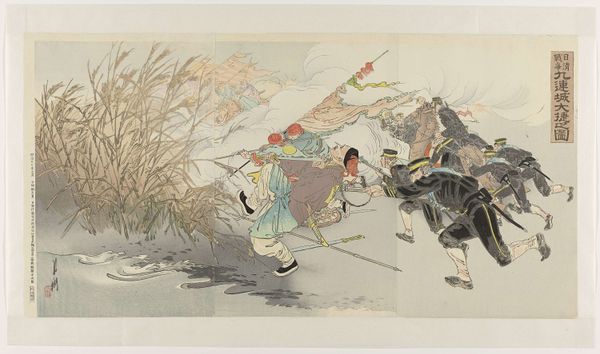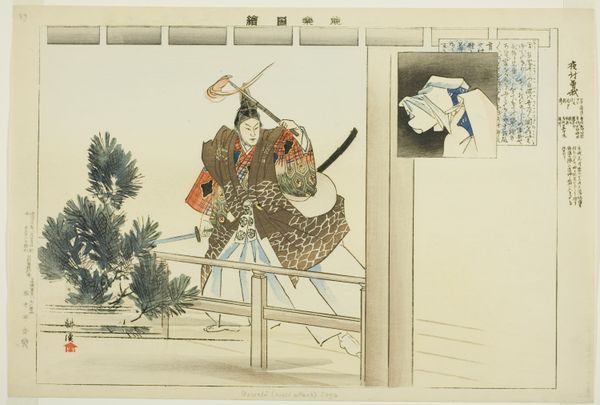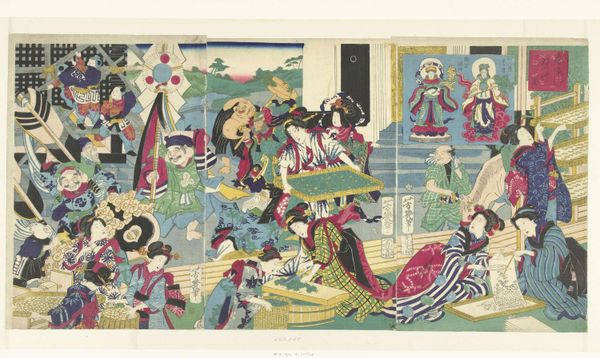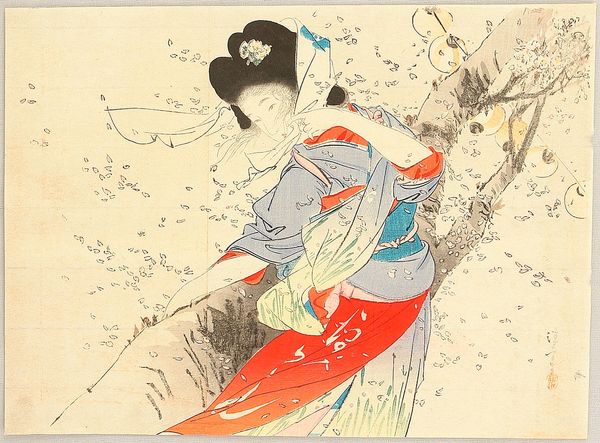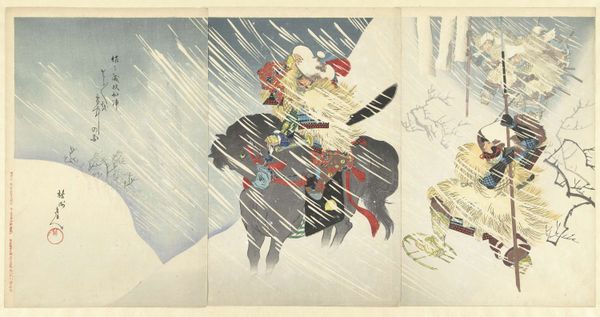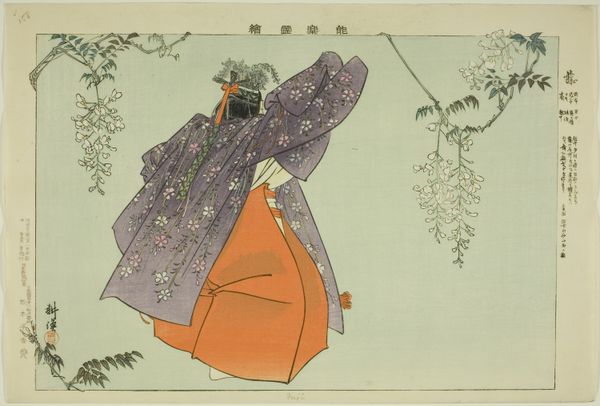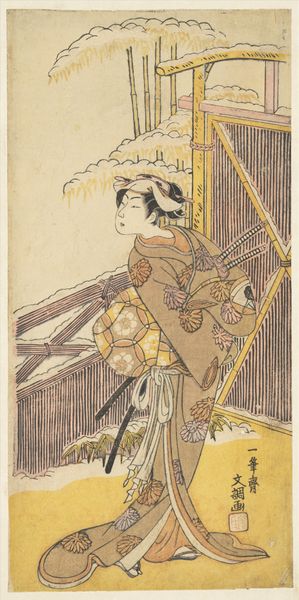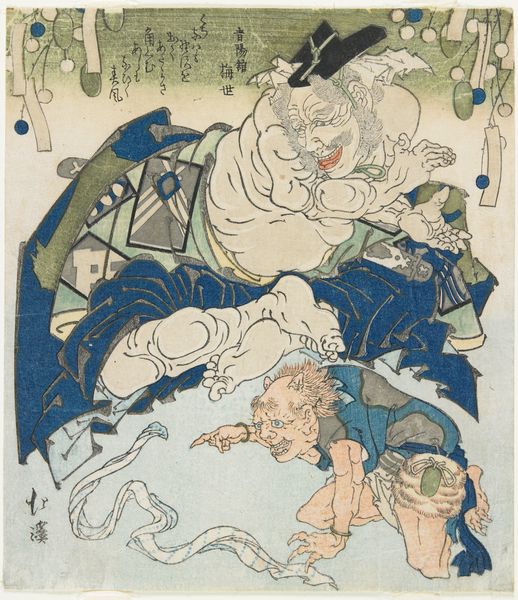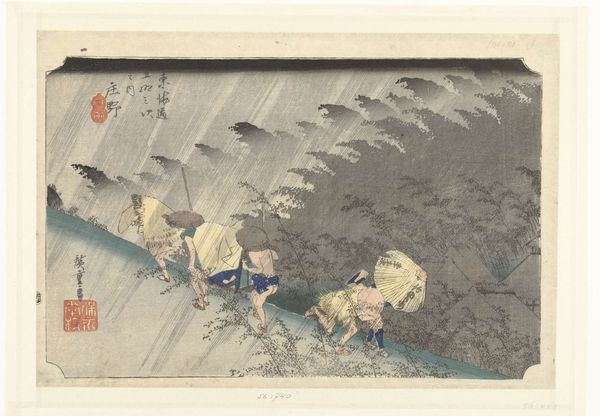
print, woodcut
# print
#
landscape
#
figuration
#
woodcut
#
genre-painting
Dimensions: 9 9/16 × 11 7/8 in. (24.29 × 30.16 cm) (image)10 5/8 × 12 13/16 in. (26.99 × 32.54 cm) (sheet)
Copyright: No Copyright - United States
Editor: We’re looking at John Edgar Platt’s “Snow in Springtime,” a woodcut print made around 1919 or 1920. The composition, with its elevated view of children playing, is quite striking, almost dreamlike. How do you interpret the symbolism at play in this image? Curator: The symbols within this seemingly simple scene vibrate with echoes of resilience and hope. Notice how the snow, typically associated with winter's dormancy, exists concurrently with children actively engaged in springtime play. What does this juxtaposition evoke for you? Editor: It feels a bit contradictory, doesn't it? A playful scene in what might be difficult times, since it’s after the First World War? Curator: Precisely! The artist utilizes the symbol of snow as more than just a weather condition, more as a collective memory, or perhaps a residue, of darker times. Children are forever potent symbols of the future; so how do their joyous interactions on the swing, play off the landscape weighed down by the pallor of ‘snow’ which threatens to persist too long? It becomes a powerful commentary on enduring spirit. Editor: The figures on the swings appear to soar high, reaching, perhaps escaping the pallor? Curator: Consider also how Platt positions those on the ground, weighed by expectations – or perhaps a yearning, to join in. Each choice reveals profound reflections on society’s mood during this transitional period, of war and trauma but also hope for the future. It makes us think of societal tensions played out within one joyful frame. Editor: So, the image becomes almost an artifact itself, a cultural document filled with hopes and anxieties, recorded with sharp strokes on a block of wood! Curator: Exactly! It is a perfect intersection between personal narrative and universal experiences.
Comments
minneapolisinstituteofart over 1 year ago
⋮
This raucous print, one of John Platt’s earliest, was revolutionary in every way. Rarely had the leaders of Britain’s early 20th-century color woodcut revival depicted movement so vividly and in such a modern, contemporary setting. Nor were they in the habit of using family members as models. The two girls sharing the swing are Platt’s sisters, Marian and Kathleen. Safely off to the side are his young children, Anthea and Michael. After making this print, seen here in an exceptionally crisp, colorful impression, the meticulous Platt returned to tradition and spent the 1920s doing mostly landscapes.
Join the conversation
Join millions of artists and users on Artera today and experience the ultimate creative platform.
